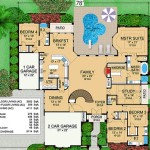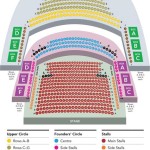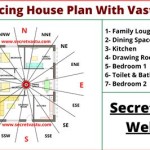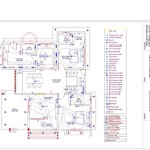How To Add Dimensions to a Floor Plan
Adding dimensions to a floor plan is a crucial step in creating a usable and understandable representation of a space. Accurate dimensions are essential for contractors, builders, interior designers, and even homeowners undertaking renovations. They provide the necessary information for accurate material estimation, cost calculation, and construction execution. This article outlines best practices for adding dimensions to a floor plan, ensuring clarity and minimizing potential errors.
Choose the Right Software
Several software options are available for creating and dimensioning floor plans, ranging from free online tools to professional architectural design software. Choosing the right software depends on the complexity of the project and the user's experience level. Simple projects might only require a basic online tool, while complex architectural designs necessitate professional-grade software. Key features to look for include automated dimensioning tools, layer management capabilities, and the ability to export in various file formats.
Establish a Clear Scale
Before adding dimensions, establish a clear and consistent scale for the floor plan. The scale represents the ratio between the drawing's dimensions and the actual dimensions of the space. Common scales include 1/4" = 1'-0" for residential projects and 1/8" = 1'-0" for larger commercial spaces. Clearly indicate the chosen scale on the floor plan to avoid misinterpretations.
Dimension Walls and Overall Dimensions
Begin by dimensioning the exterior walls of the building or space. Place the dimension lines outside the floor plan, with extension lines extending perpendicularly from the walls. The dimension value should represent the actual length of the wall. Add overall dimensions for the length and width of the entire space, providing a comprehensive overview of the area.
Dimension Interior Walls and Partitions
After dimensioning exterior walls, proceed to dimension interior walls and partitions. These dimensions are crucial for defining the size and layout of individual rooms and spaces within the floor plan. Ensure that all wall segments are accurately dimensioned, including short sections and alcoves. Consistent placement of dimension lines and extension lines maintains clarity and readability.
Dimension Doors and Windows
Accurately dimensioning doors and windows is essential for proper installation and functionality. Include dimensions for the width of each door and window opening. For windows, also consider dimensioning the height and distance from the floor. Clearly label each opening to distinguish between doors and windows and provide specific information about their size.
Dimension Fixtures and Fittings
Include dimensions for fixed elements such as kitchen cabinets, bathroom fixtures, and built-in appliances. These dimensions are critical for planning the layout of these elements and ensuring adequate space for installation. Indicate the dimensions of each fixture, including length, width, and any relevant projections or recesses.
Use a Consistent Dimensioning Style
Maintaining a consistent dimensioning style throughout the floor plan is essential for professional presentation and easy interpretation. Use a consistent font size and style for dimension values. Ensure that dimension lines are equally spaced from the floor plan and that extension lines are perpendicular to the dimensioned element. A standardized approach minimizes confusion and enhances the overall clarity of the drawing.
Double-Check for Accuracy
Before finalizing the floor plan, thoroughly double-check all dimensions for accuracy. Errors in dimensioning can lead to costly mistakes during construction or renovation. Verify the measurements against the original architectural plans or site survey. Careful review and verification are essential for ensuring the reliability and usability of the dimensioned floor plan.
Provide Clear Annotations and Labels
In addition to numerical dimensions, use clear annotations and labels to provide further information about specific elements within the floor plan. Label rooms, doors, windows, and other fixtures with descriptive text. Annotations can also be used to indicate specific materials, finishes, or construction details. Clear labeling enhances the understanding and utility of the floor plan for all stakeholders involved.

Add Measurements

Floor Plans With Dimensions Including Examples Cedreo

12 Examples Of Floor Plans With Dimensions

Add Measurements
Overview Measurements On Floor Plans Roomsketcher Help Center

How To Read A Floor Plan With Dimensions Houseplans Blog Com

How To Setup And Add Dimensions Floor Plans In Auto Cad

Floor Plans With Dimensions Including Examples Cedreo

Meaning Of Layout Corner Bar Sketchup Community
Overview Measurements On Floor Plans Roomsketcher Help Center








